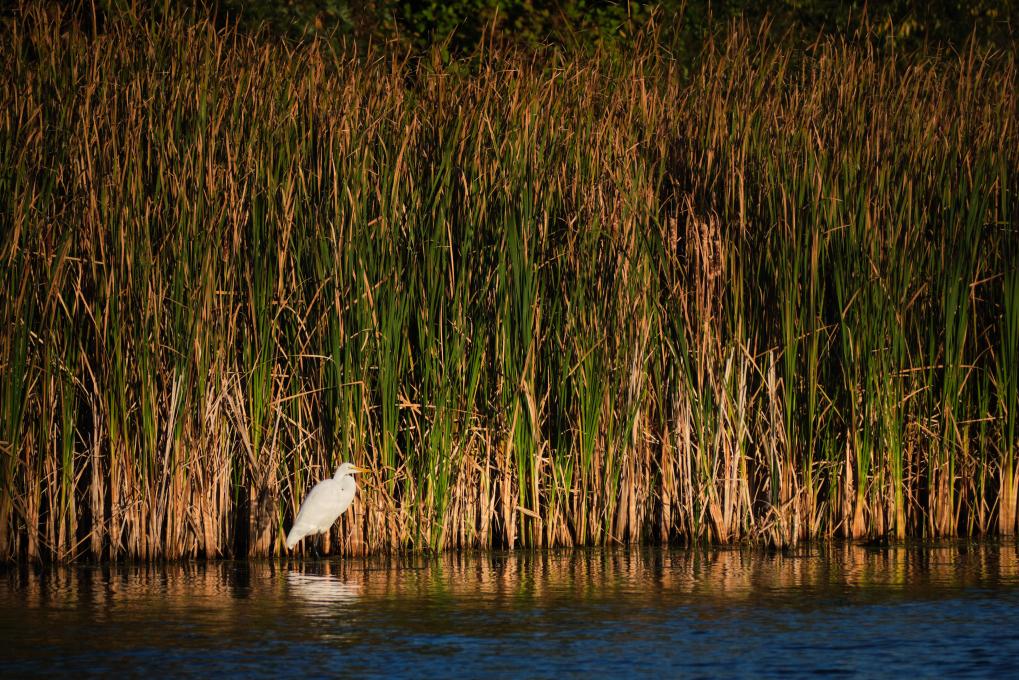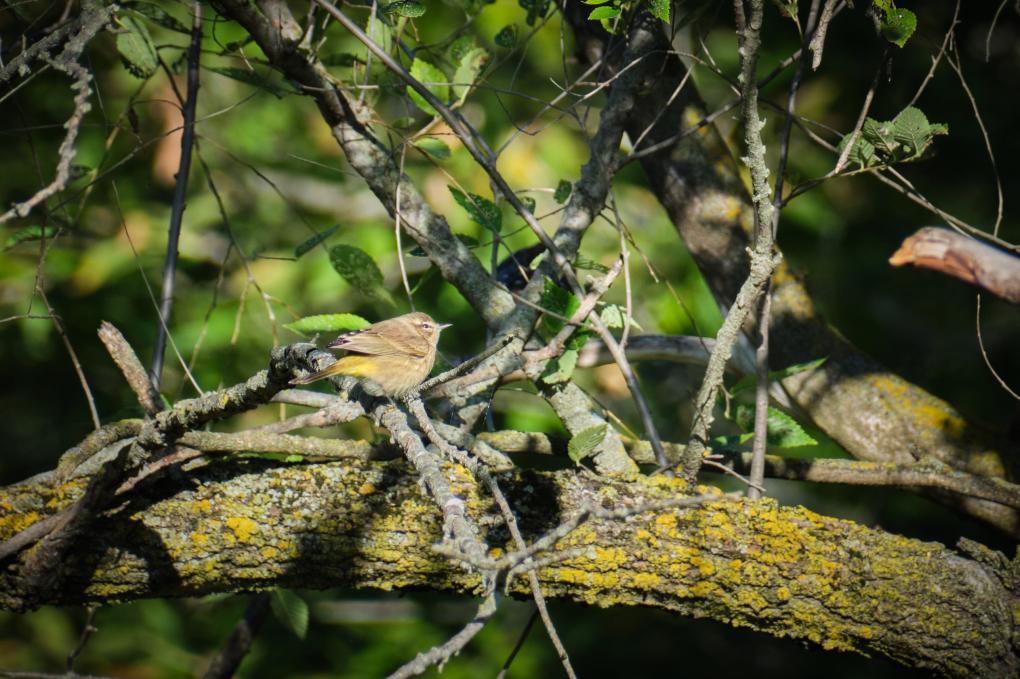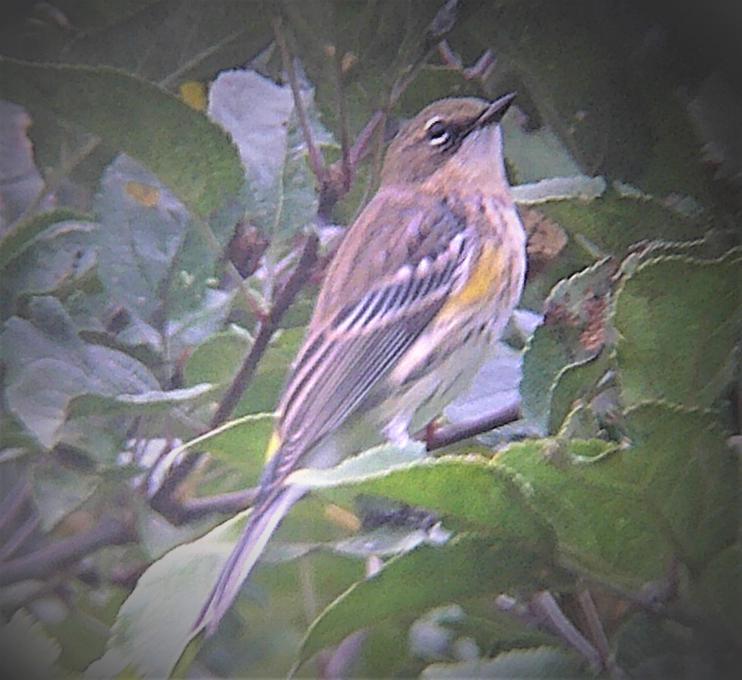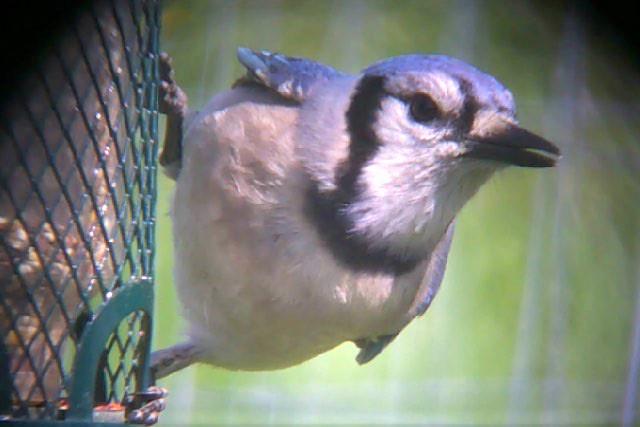The Cornell Lab Bird Academy › Discussion Groups › Joy of Birdwatching › Activities: Bird ID Practice
-
Bird AcademyBird AcademyShare your experience participating in this lesson's activities. Comment on as many or as few activities as you'd like.You must be enrolled in the course to reply to this topic.
-
Activity 3 - Chestnut-backed Chickadees will fly to feeders and collect a few seeds before flying off. Dark-eyed Juncos are more frequently found along the ground scavenging seeds that fall from feeders, but they sometimes visit the feeders too. I don't usually see American Robins at feeders, instead the are on the ground looking for bugs or worms- sometimes in flocks.
-
I identified a roadrunner because they are out on the somewhat rural roads where I live this time of year. I identified this bird by its size, the fact that it was "running on the road" (roadrunner), and its long tail. I did not take a photo of it. Additionally I've been watching a blue scrub jay. It is not a blue bird, and I identified it on Merlin and in my bird book. Its larger than most birds that get on the feeder, including a bit larger than the male Northern Cardinals. I love its blue feathers, distinct from most of the birds that visit my oak grove.
-
Exercise 2: redwing blackbird - red epaulets (though they appear more orange in some photos) male northern cardinal - entire body while female has reddish coloring on her tale and wings hairy woodpecker - back of neck
-
Activity Two. I chose to observe the color white. The dark-eyed junco has white on his belly and on the edges of his tail and wing feathers. The rest of his body is slate gray. The ruby-crowned kinglet has a white bar on his wings and a white eye ring. Most of his body is olive-gray in color with a red spot on his crown. The black-capped chickadee has white feathers on the sides of his head and white stripes on his wings. He has a black cap on his head , as well as a black throat, and black on his wings and tail. His belly is buff-colored. Activity Three: The Great Blue Heron at the nature center stands very quietly at the edge of the pond, looking intently in the water for his prey. When he sees something he wants to eat, he quickly dips his head into the water to nab it. The dark-eyed junco prefers to look for seeds to eat on the ground. He seldom tries to perch on the tube feeder, although he will fly up to the deck rails to eat seeds when we place them there. The downy woodpecker flies to the suet feeder or the cylinder feeder to eat. I have never seen him on the ground or the tube feeder, but I have often seen him on the side of a tree looking for bugs to eat.
-
Activity 2: I found three birds in my neighborhood that have black on different parts of their bodies. The male House Sparrow has black on his throat and upper chest and around his eye. His back is brown and gray with narrow black stripes. His tummy is very light brown. His head is gray on top and on the cheek with a thick brown stripe in between. The Dark-eyed Junco is black all over except his belly, legs, and beak. The beak is pink and the belly is white. The Black-capped Chickadee has a black throat and top of head. There is a white band extending from the beak almost to the back of the neck. The back and tail are gray and the belly is very pale. The beak is black and the legs are gray.
-
Activity 4 - My favorite bird is the Bohemian Waxwing. A Bohemian waxwing is about the size of a robin with a square tipped tail and a crest on its head. Overall it has a buffy gray tone with a black mask and red/rust coloured head. It can most easily be distinguished from the Cedar Waxwing by its rusty colouring under the tail; Cedar waxwing has white colouring under its tail. Where I live in southwest Alberta, they can more likely be found in the non breeding season. They are commonly found in large flocks in fall devouring any berries left on the plants especially serviceberry and juniper where I live. In winter they tend toward smaller flocks and range further for food. They make a high pitched trill sound.
-
Activity 1 - compared American Robin and White-Breasted Nuthatch. Used Merlin for Sound ID (both frequent my backyard) and All About Birds for researching other ID comparisons. The Nuthatch has distinctive body shape - small body with large, usually upturned head and the Robin is larger body size with big belly. The male Robin is more colorful with an orange chest and belly with dark grey/brown coloring elsewhere while the nuthatch has a white chest and belly with black and gray colors elsewhere. Behaviors are different too - the nuthatch is most often seen traveling down the tree trunk while the robin hangs out in the tree branches or on the ground. The nuthatch will visit my feeders while the robin does not.
-
Activity 4: My favorite bird is the cedar waxwing. It is about the size of a robin, with a smooth appearance and a crest. It has a black mask and yellow-tipped tail feathers that give it its name (like dipped in wax). It is brown and gray with yellow on its belly. It is often in a flock and loves berries, often found in trees and bushes that bear fruit. It makes a soft high pitched squeak or a squeak with trills. It can be found in Canada during the breeding sesaon, then southern USA and Mexico in nonbreeding season. It can be seen year round in the northwest, Midwest, and Northeast USA from coast to coast.
-
Activity 4: My favorite bird is the Northern Flicker. According to my National Geographic field guide, a call that is given year-round is a loud klee-yer. The breeding call is a long, loud series of wick-er notes. The size of the Northern Flicker is about the size of an American Robin. The tail is medium in length and spreads out moderately (to about the width of the bird’s body) in flight. The bill is long and thin and curves slightly downward. The body is moderately stout and the neck is short. The Northern Flicker’s preferred habitat is open woodlands and suburban areas. The breeding range spreads across Canada and all but the western edge of Alaska. It can be found year-round across all of the United States except Texas and the southwestern corner of the country. In winter the Northern Flicker can be found in Texas, the southern tip of California, and southwestern Arizona.
-
Activity 3: I saw a House Sparrow looking for food in my neighbor’s yard. He was pecking in the dirt in my neighbor’s flower bed. My guess is that he was looking for seeds that have been lying dormant (it was early December when I watched him). I also saw a Black-capped Chickadee looking for food in the bark of my neighbor’s tree. He used his beak to quickly peck in the bark. I think he or she was probably looking for insects. I saw a Dark-eyed Junco eating the seeds of the purple coneflower in my backyard. Normally the American Goldfinches in my neighborhood like to eat these seeds, so it was surprising to me to see the Dark-eyed Junco eating this food.
-
Favorite Bird: Eastern Blue Bird size/shape: sl smaller than Robin, round shape; blue on top, orange belly with some white under tail; prefers sitting along garden edge in tall bushes, trees; spring/summer visitors to our Catoctin Mountains woodlands with established tall trees and open edges each year; Southern Canada through middle, eastern, southern USA; messy combination of chirps
-
Activity (3): three birds looking for food Northern Cardinal: at suet feeder, searching for bugs in bushes E. Towhee: ground feeder under trees/bushes, foraging in leaf litter Downy woodpecker: at suet feeder, feeding on insect on tree bark
-
Activity 2: (3) birds - same colors 1. Dark Eyed Junco: black eyes, gray on top, white belly light colored beak 2. Brown Headed Cowbird: Gray brown all over, gray beak, white next to head 3. White Breasted Nuthatch: White face, black cap, blue-gray upper body
-
Eastern Towhee size of robin, short beak, round short body Tufted Titmouse slightly smaller than robin, crested head, short beak
-
Activity 1: Yellow Billed Magpie and Eurasian Collard Dove, magpie has long legs, yellow bill, stands tall or crouches, dove has less neck, rarely see its feet. Activity 3: woodpecker hops up the feeder post and around the feeder from beneath, nuthatch hops up and then back down the feeder post head first, to a tree and back again, dark eyed junco hops around on the ground at the base of the feeder post.
-
1. Sparrows and Cardinals 2. Male house finch - red and brown; Male American Goldfinch - winter colors brown with some yellow; European Starling - black and brown. 3. Dark Eyed Junco - ground feeder and bushes; Sparrows - ground and bird feeders. The sparrows will eat from any feeder and from the ground; Red-bellied woodpecker - side feeder (suet feeder designed for woodpeckers) 4. Northern Flicker. Medium to large sized bird, rust colored face, black bars on wings, black spots on belly, grey head with red spot on back of head.
-
1: Sparrow and Blackbird 2: Female Sparrow, Dunnock and female Blackbird are all Brown, the Blackbird is much larger and the dunnock has a greyish throat and cheeks and also the bill is thinner than the sparrows.3: The sparrows fly to the hanging feeder, pick some seeeds an then fly back and forth from the Hedge. The Blackbird is more shy an waits until it is alone - it does Not fly onto the feeder but picks seeds or worms from the ground. The wood pigeon picks the seeds from the ground and does Not seem to mind about the sparrows. 4: The nuthatch is a small (little smaller than a sparrow) bird with a Short neck, long bill, very short legs. Its chest is rust brown and its back is gray. It has a black eyestrip. Sometimes you can see the nuthatch running heads down a tree Trunk.
-
Activity 1: Two birds I used Merlin to ID were the Carolina Wren and Downy Woodpecker. They were at my feeder, and I used color to identify them. The Wren was gold on the belly and had a white eyebrow followed by brown nape and back, with a pattern that became more dominant as you reached the tail. Very alert and the bill is not too long with a slight downward curve at the tip. The Downy Woodpecker was a female with no red visible, but had a black crown and eye stripe mask, white belly, black wings with white spots. The Bill had a whiteish tan spot at the end of the bill on the bird's face Infront of the eyes. Activity 2: Three birds that have the same color or close to it that I used for this was the Robin with an orange belly, the red winged blackbird with a reddish orange wing patch, and a Eastern Towhee under the wing on the side. Activity 3: The first bird I observed was a Great blue Heron in a tree, very still and foraging for food from high up towards the top of the tree. The second bird was the Black Capped Chickadee which is a favorite of mine, and it behaved very quick, alert, came to the feeder, picked up black oiled sunflower seeds and would fly back to a branch or stay at the feeder, holding the seed with its feet, and cracked it open with its beak. The third bird I observed was the White Breasted Nuthatch. A little less quick and would also take food and fly to a branch. The Black Capped Chickadee and Nuthatch showed a dominance battle at points with each other at the feeder. Both hopped and constantly looked up at their surroundings between eating. Our feeder is right at the edge of the woods on a hill where there are a good number of hawks and raptors in the area which might to me explain the alert behavior. Activity 4: My favorite bird is the Northern Cardinal. It has a red belly, darker red wings, short legs, black mask and throat patch, pointed crest on the top of the head, and orange bill. Beautiful bird.
-
I think I have a much better idea how to id birds now. I don't go out much, but we have quite a lot of wildlife since we live near a canal. I FINALLY have my binoculars adjusted and now know how to use them. Thank you very much for that. My harness is being ordered now. I hope to participate in the bird count next week!
-
Activity 1: One larger bird that showed up at my feeder was the northern flicker, which is one of the largest birds I have seen by my feeder, and in comparison, A more medium sized woodpecker with a red cap has also been seen, which is smaller than the flicker (downy woodpecker). Activity 2: two different birds I have seen frequently this year, were both black and yellow. One was larger, and had a black cap, while the other was about 2/3 the size and had black all up and down the dorsum of the bird. the larger bird was in fact a goldfinch (american) while the smaller was a lesser goldfinch. I was not at feeder today, but last week I saw three very different birds at feeder, one was small, and had a reddish/orange breast, and would walk down the feeder towards the ground (red-breasted nuthatch), another was small and dark headed with gray (mostly) body and hopped around the grass and rocks, and stick piles. Finally, a small brown bird with red breast and red cap loves to sit on the tray or cylindrical feeder. Activity 4: My favorite bird is the American Robin! medium sized with yellow bill, dark head, and beatiful orange breast. Likes to hop around my yard looking for earthworms, and fly to tops of trees and roofs to sing its beautiful song. Has a wonderful song which has a beautiful vibrato as well as very characteristic sounds. Common but amazing, and reminds me how much of how I love to be aware of birds around me. I have even seen a robin show up at my tray feeder on days, and it was the first bird recorded at my feeder this summer!
-
Activity 1: Two birds I could tell apart based on shape were a California Towhee and some House Finches. The California Towhee is a larger “robin-sized” bird with a long tail compared to the Houses Finches which are a smaller “sparrow sized bird”. Activity 2: Three different birds that have black on them would be a Black Phoebe, a Dark-eyed Junco and a Lesser Goldfinch. The Black Phoebe is a medium sized flycatcher that is almost entirely black except for its white belly, making it look like it is wearing a tuxedo. The small Dark-eyed Juncos markings vary within its different populations. The ones I see most commonly are the Oregon subspecies, where the males have a dark black head opposed to the slate-colored ones which are almost entirely gray. Finally, the Lesser Goldfinch are a small yellow bird that has black wings and males have black on the top of their heads. Activity 3: Three different birds searching for food would be a yellow-rumped warbler, a red-breasted nuthatch and a white-crowned sparrow. The yellow-rumped warbler can be seen flying through the air like an acrobat chasing small insects and also moving quickly from branch to branch. The red-breasted nuthatch makes his way around and upside on the branches of a tree, I often see them on pines checking out pinecones. Compared to the white-crown sparrows who hop and peck around on the ground. Activity 4: One of my favorite birds is the Northern Flicker. According to Merlin bird ID it is described as a large brown colored woodpecker featuring a large black crest on its front with black polka dots below and black barring on its back. When in flight a large white patch can be seen on its rump. The underside of its wings can be red or yellow depending on the location where you see it. Typically, the yellow is seen in Eastern North America versus the red in Western North America. They are found in trees but can also be seen on the ground looking for ants or worms.
-
- Activity 1 - When I was out photographing birds in one of the nearby forest preserves, I saw both a Great Egret and a Double-crested Cormorant. Although it was pretty easy to tell the difference between the two based on their colors, the egret is significantly larger and has much longer legs than the cormorant.

- Activity 2 - On the same outing, I found a couple of White-throated Sparrows as well as an Orange-crowned Warbler. These birds are similarly sized, but after looking up their distinguishing features, I learned that the White-throated Sparrow have a flash of yellow right around their eye, while the Orange-crowned Warbler doesn't and often has yellow on their lower tail feathers.

- Activity 3 - I saw many different food-finding behaviors when I was out looking for birds. Mallards and geese were out in the lakes searching for food near the surface of the water, and I saw a Yellow-bellied Sapsucker and White-breasted Nuthatch up along the tree trunks searching for insects!

- Activity 4 - My favorite bird is the Blue Jay, and they are very easy to identify in my area by their striking blue and black colors, average size, and well-known (and loud!) song. They seem to like foraging in both trees and on the ground, and are also common at feeders.
- Activity 1 - When I was out photographing birds in one of the nearby forest preserves, I saw both a Great Egret and a Double-crested Cormorant. Although it was pretty easy to tell the difference between the two based on their colors, the egret is significantly larger and has much longer legs than the cormorant.
-
Activity 1: The difference in shape between a Blue Jay and a Yellow-rumped Warbler. Blue Jay's are several sizes larger with bigger beaks and longer legs. Easy to identify with noticeable crest, as well.


-
Activity 1 I identified a Sparrow and a Dove by their shape.
Read More:




